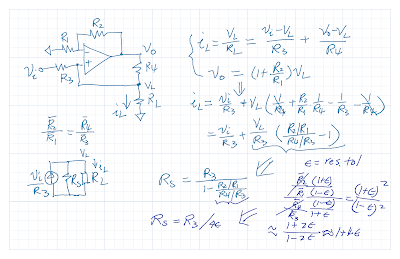The computer peripheral bus is eventually settled on PCIe and one small form factor expansion card is M.2 which provides up to 4 PCI express lane. NVMe SSDs are now widely used and getting inexpensive. Coming in size 2280/60/42/30. M Key.
- Patriot Memory P310 NVMe PCIe M.2 Gen 3 x4 480GB $29.49 (6 cents/GB) 11/24
- Patriot Memory P310 NVMe PCIe M.2 Gen 3 x4 240GB $18.99 (8 cents/GB) 10/24
- Western Digital WD Blue Gen 3 x4 M.2 2280 500GB $49.99 (10 cents/GB) 6/22
- Lexar E-series 64GB Micro SD 100MB/s U3, A1, $6.13 (10 cents/GB) each (for a pack of 3) in 10/24,
- UGREEN 10Gbps M.2 NVME to USB3.3 Gen 2 $15.99 in 11/24
- ORICO M.2 NVMe USB3.1 Gen 2 (10Gbps) $18.99 in 6/22
ORICO + Patriot 480GB + Macbook Pro Linux
gnome-disks benchmark, 100MB 100 Samples
Average Read 458.4 MB/s
Average Write 417.6 MB/s
Average Access time 0.22 msec
dd if=/dev/zero of=/media/davex/Pat480G/dump.bin bs=1G count=100 status=progress
107374182400 bytes (107 GB, 100 GiB) copied, 1696.78 s, 63.3 MB/s
dd of=/dev/null if=/media/davex/Pat480G/dump.bin bs=1G count=100 status=progress
107374182400 bytes (107 GB, 100 GiB) copied, 242.579 s, 443 MB/s
UGREEN + Patriot 480GB + Macbook Pro Linux
exFAT
dd if=/dev/zero of=/media/davex/PAT480GXFAT/dump.bin bs=100M count=4K status=progress
429496729600 bytes (429 GB, 400 GiB) copied, 956.569 s, 449 MB/s
sudo dd if=/dev/sdd of=/dev/null bs=100M count=4K status=progress
429496729600 bytes (429 GB, 400 GiB) copied, 974.971 s, 441 MB/s
UGREEN + Patriot 480GB + PC Windows 10
exFAT
winsat disk -drive d
> Disk Random 16.0 Read 215.03 MB/s 7.8
> Disk Sequential 64.0 Read 642.06 MB/s 8.2
> Disk Sequential 64.0 Write 661.92 MB/s 8.2
> Average Read Time with Sequential Writes 0.190 ms 8.6
> Latency: 95th Percentile 0.321 ms 8.8
> Latency: Maximum 0.610 ms 8.9
> Average Read Time with Random Writes 0.192 ms 8.9
UGREEN + Patriot 240GB + Macbook Pro
gnome-disks benchmark, 100MB 100 Samples
Average Read 458.5 MB/s
Average Write 420.8 MB/s
Average Access time 0.08 msec
dd if=/dev/zero of=/media/davex/Pat240G/dump.bin bs=1G count=100 status=progress
107374182400 bytes (107 GB, 100 GiB) copied, 718.181 s, 150 MB/s
dd of=/dev/null if=/media/davex/Pat240G/dump.bin bs=1G count=100 status=progress
107374182400 bytes (107 GB, 100 GiB) copied, 242.159 s, 443 MB/s
ORICO + Patriot 240GB + Macbook Pro Linux
NTFS
dd if=/dev/zero of=/media/davex/Pat240G/dump2.bin bs=100M count=1K status=progress
107374182400 bytes (107 GB, 100 GiB) copied, 811.527 s, 132 MB/s
ext4
sudo dd if=/dev/zero of=/media/davex/Pat240G/dump.bin bs=100M count=1K status=progress
107374182400 bytes (107 GB, 100 GiB) copied, 240.032 s, 447 MB/s
tr '\0' '\377' < /dev/zero | sudo dd of=/media/davex/Pat240G/dump2.bin bs=100M count=1K status=progress iflag=fullblock
107374182400 bytes (107 GB, 100 GiB) copied, 261.163 s, 411 MB/s
sudo dd if=/dev/random of=/media/davex/Pat240G/dump2.bin bs=100M count=1K status=progress
107374182400 bytes (107 GB, 100 GiB) copied, 429.978 s, 250 MB/s
exFAT
dd if=/dev/zero of=/media/davex/PAT240GXFAT/dump2.bin bs=100M count=1K status=progress
107374182400 bytes (107 GB, 100 GiB) copied, 250.026 s, 429 MB/s
dd if=/media/davex/Pat480G/Lux2e/Lux2e.vdi of=/media/davex/PAT240GXFAT/Lux2e/Lux2e.vdi bs=100M status=progress
124962996224 bytes (125 GB, 116 GiB) copied, 422.505 s, 296 MB/s
UGREEN + Patriot 240GB + Raspberry Pi 5
exFAT
dd if=/dev/zero of=/media/davex/PAT240GXFAT/dump2.bin bs=100M count=1K status=progress
107374182400 bytes (107 GB, 100 GiB) copied, 415.082 s, 259 MB/s
dd of=/dev/null of=/media/davex/PAT240GXFAT/Lux2e/Lux2e.vdi bs=100M count=1K status=progress
124962996224 bytes (125 GB, 116 GiB) copied, 327.183 s, 382 MB/s
exFAT
dd if=/dev/zero of=/media/davex/PAT240GXFAT/dump2.bin bs=100M count=1K status=progress
107374182400 bytes (107 GB, 100 GiB) copied, 297.226 s, 361 MB/s
dd of=/dev/null of=/media/davex/PAT240GXFAT/Lux2e/Lux2e.vdi bs=100M count=1K status=progress
124962996224 bytes (125 GB, 116 GiB) copied, 278.538 s, 449 MB/s
UGREEN + Patriot 240GB + Jetson Nano
exFAT
dd if=/media/davez/PAT240GXFAT/Lux2e/Lux2e.vdi of=/dev/null bs=100M status=progress
124970336256 bytes (125 GB, 116 GiB) copied, 561.616 s, 223 MB/s
dd of=/media/davez/PAT240GXFAT/dump.bin if=/dev/zero bs=100M count=1K status=progress
107374182400 bytes (107 GB, 100 GiB) copied, 1405.02 s, 76.4 MB/s
UGREEN + WD 500GB + Macbook Pro
ext4
gnome-disks benchmark, 100MB 100 Samples
Average Read 456.6 MB/s
Average Write 329.8 MB/s (start off at 420 MB/s , drop to 260 MB/s after half way)
Average Access time 0.21 msec
sudo dd if=/dev/zero of=/media/davex/SYSTEM/dump.bin bs=100M count=1K status=progress
107374182400 bytes (107 GB, 100 GiB) copied, 401.139 s, 268 MB/s
WD 500GB + Raspberry Pi 5 (nvme)
ext4
sudo dd if=/dev/zero of=/media/davez/SYSTEM/dump.bin bs=100M count=1000 status=progress
104857600000 bytes (105 GB, 98 GiB) copied, 321.092 s, 327 MB/s
sudo dd of=/dev/null if=/media/davez/SYSTEM/dump.bin bs=100M status=progress
104857600000 bytes (105 GB, 98 GiB) copied, 116.73 s, 898 MB/s
The file format block size has a significant effect on the speed; it is a tradeoff between the speed and disk space utilization.





















